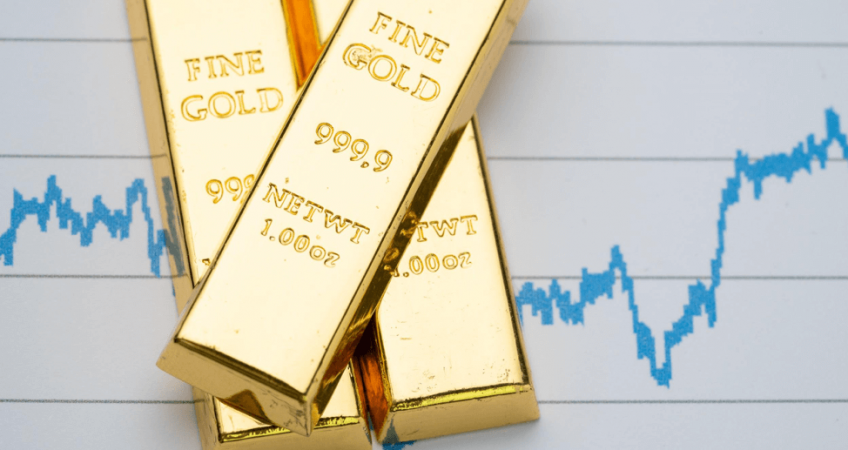
Recession-Proof Your Portfolio with Precious Metals
The Great Recession (late 2007 to mid-2009) devastated American families, with some lingering financial woes a decade later.
Foreclosures rose by 81% from 2007 to 2008, amounting to 3.2 million total foreclosure filings. Those who managed to keep their homes that year lost almost $2 trillion in total property value, with the Federal Reserve estimating U.S. homeowners lost 55% of housing wealth from 2007 to 2009. Median overall wealth plummeted from about $88,000 per family in 2003 to just over $56,000 in 2013, according to a study by the Russell Sage Foundation.
Causes of the Great Recession
The Great Recession had numerous complex causes, but the Clinton-era Gramm-Leach-Bliley Act (GLBA) is widely agreed to be the biggest contributor.
The GLBA repealed legislation from the Great Depression that prohibited investment and commercial banks, along with insurance companies, from acting as one entity. This new arrangement allowed commercial banks to use their clients’ money for risky investments. After the crash, the average American was left high and dry when the dust settled, while the financial institutions that caused all this were bailed out with lavish sums of money from the taxpayers.
Municipal bonds, money market accounts, and treasury securities remain relatively safe assets as part of your portfolio. However attractive these investment options may be, the only assets that have withstood the test of time (from 6th century B.C. Lydia to 21st century America) are precious metals.
Gold Prices During Recession
While the housing market and overall wealth of Americans plummeted from 2007-2013, gold and silver experienced unprecedented gains.
The S&P 500 hit a high mark at 1850.42 in September of 2007. The index dropped to 875.49 in February 2009, a 53% loss in total value. The S&P did not recover to pre-recession levels until late 2013.
Gold was selling for around $600 per ounce in September of 2007. The price rose to over $900 by early 2009 and soared past $1,900 in the summer of 2011. Silver experienced nearly identical gains, percentage-wise, during this period.
Two things were happening across the globe that made precious metal prices skyrocket:
1. Central banks printed money at unprecedented rates.
This is also known as “Quantitative Easing.” The Federal Reserve vastly expanded its balance sheet during the Great Recession by printing money and buying mortgage-backed securities and U.S. Treasuries. The Fed’s QE programs ultimately reached $4.5 trillion in assets when it ended in 2014.
2. Central banks bought up gold bullion.
The Central Bank of Russia bought 570 metric tons of gold from 2003-2013 alone. Central banks across the globe bought 534 metric tons of gold in 2012, up 17% from 2011, according to the World Gold Council. The central banks bought 651 metric tons of gold in 2018, the most since 1967.
Some experts would say, “if the banks are doing it, you should too.” Central bank governors know that gold is a safe haven asset that also acts as collateral for currency swaps.
The World Gold Council surveyed 22 central banks last year. None of them plan to decrease their gold holdings in 2019, while 18% said they will be increasing holdings. That is your queue to do the same.
Other Precious Metals
An ounce of gold has averaged about $1,250 in the last 12 months. Gold bullion coins are flexible and can be bought in fractional denominations as small as 1/10 of an ounce. Even at these fractional rates, some may find these prices prohibitive. In these cases, taking advantage of the gold-silver ratio may be the smartest investment decision.
The gold-silver ratio describes how many ounces of silver one ounce of gold can buy. Currently, one ounce of gold can buy 85 ounces of silver. Silver prices positively correlate with gold, but fluctuations in the gold-silver ratio can create market opportunities for investors. Wise investors can take advantage of these shifts in precious metal prices to make a profit.
What Percentage of My Portfolio Should Be Gold?
There is plenty of debate as to how much gold should be in your portfolio. Some professionals recommend no more than 5-10% of your financial portfolio should be precious metals. Others recommend higher ratios, at 25% and higher.
Deciding how much gold and silver to allocate into your portfolio depends on your financial goals, and how likely you think a financial catastrophe may be (if the last century is any indication, we’re in for a wild ride!). There isn’t a one-size-fits-all solution to portfolio diversification, and you’ll need to meet with a professional for a complete financial audit of your situation.
How Do I Buy Gold And Silver?
The best way to own precious metals is bullion (coins and bars) stored in a home fireproof-waterproof safe. There is also the potential to transfer your existing 401k or IRA to a Self-Directed precious metals IRA.
Republic Monetary Exchange account executives have decades of experience in the precious metals industry and understand the individual needs of each of our clients.
Contact us today for a consultation. We’re happy to answer all your questions about recession-proofing your portfolio.
